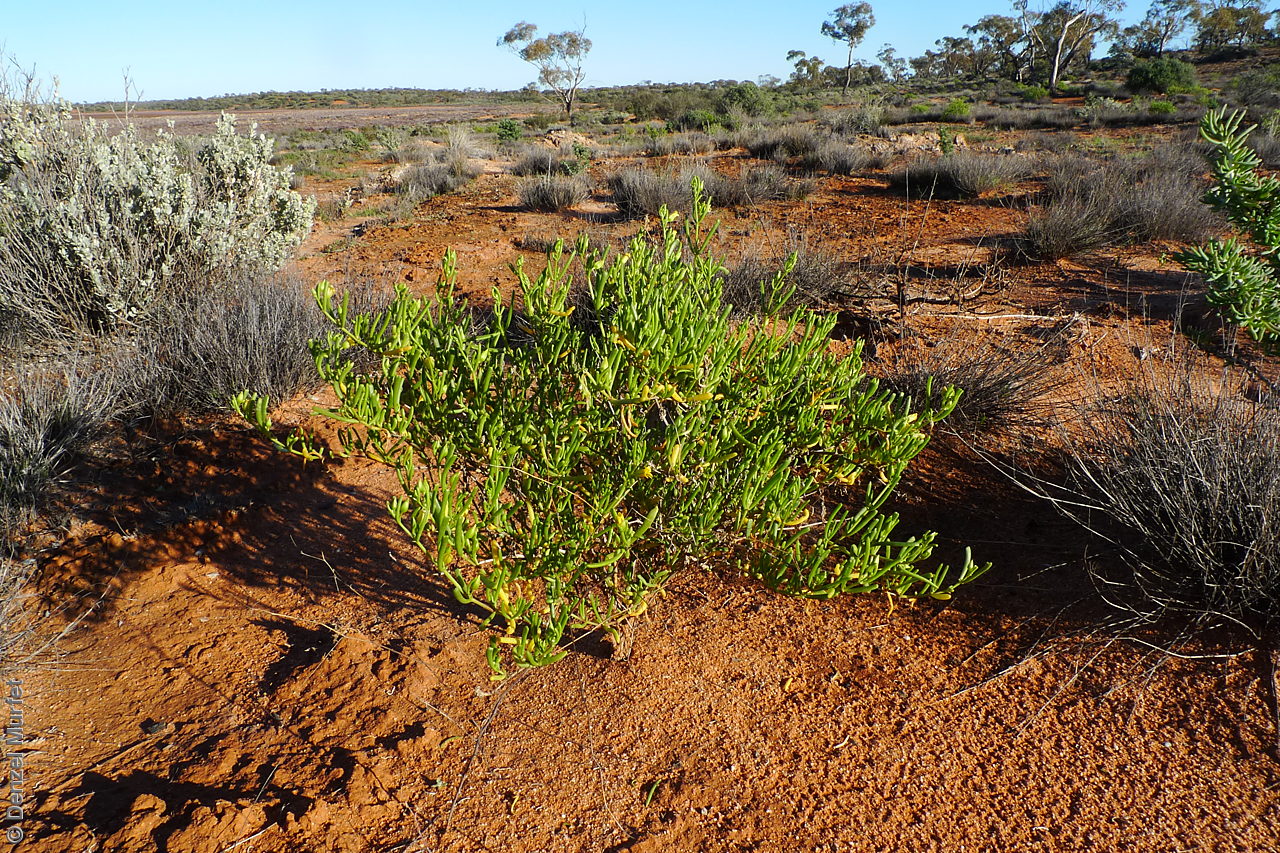
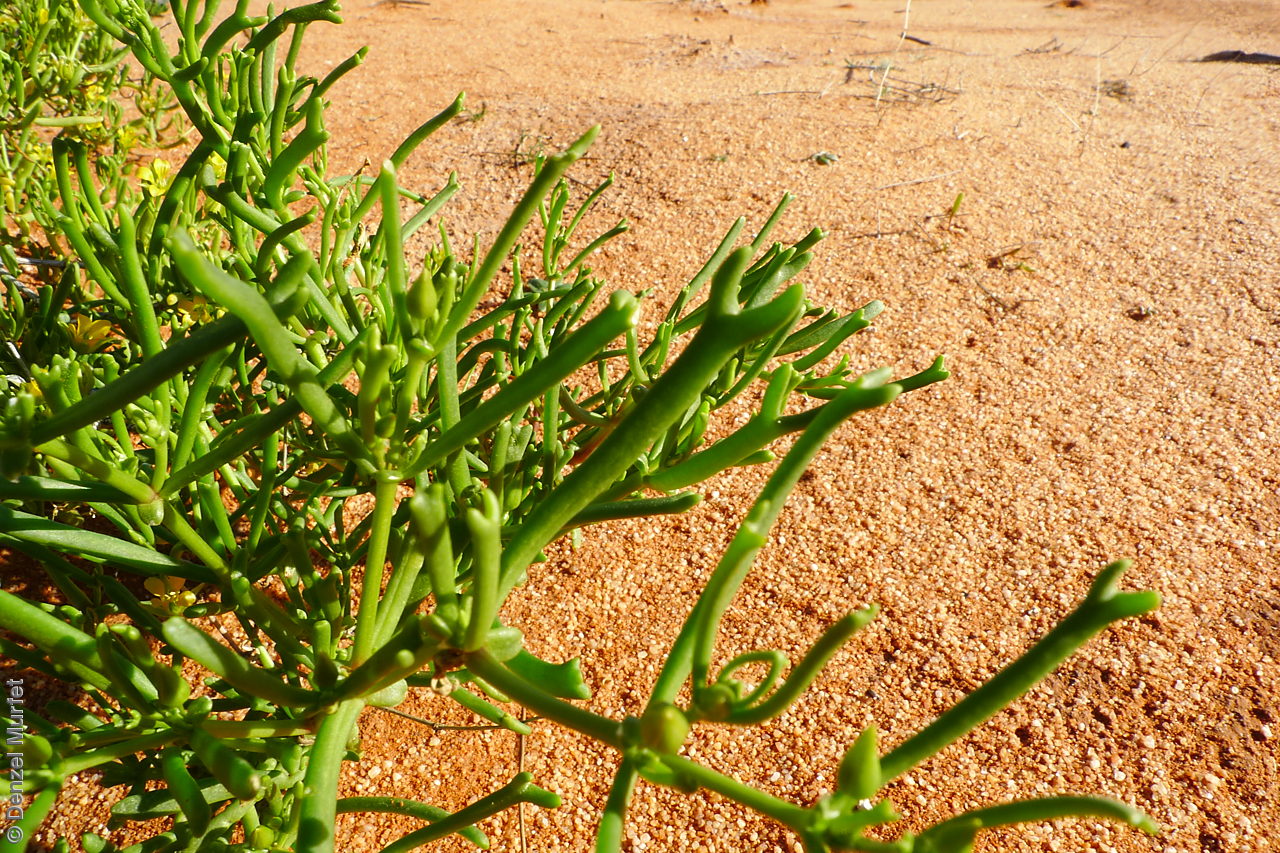
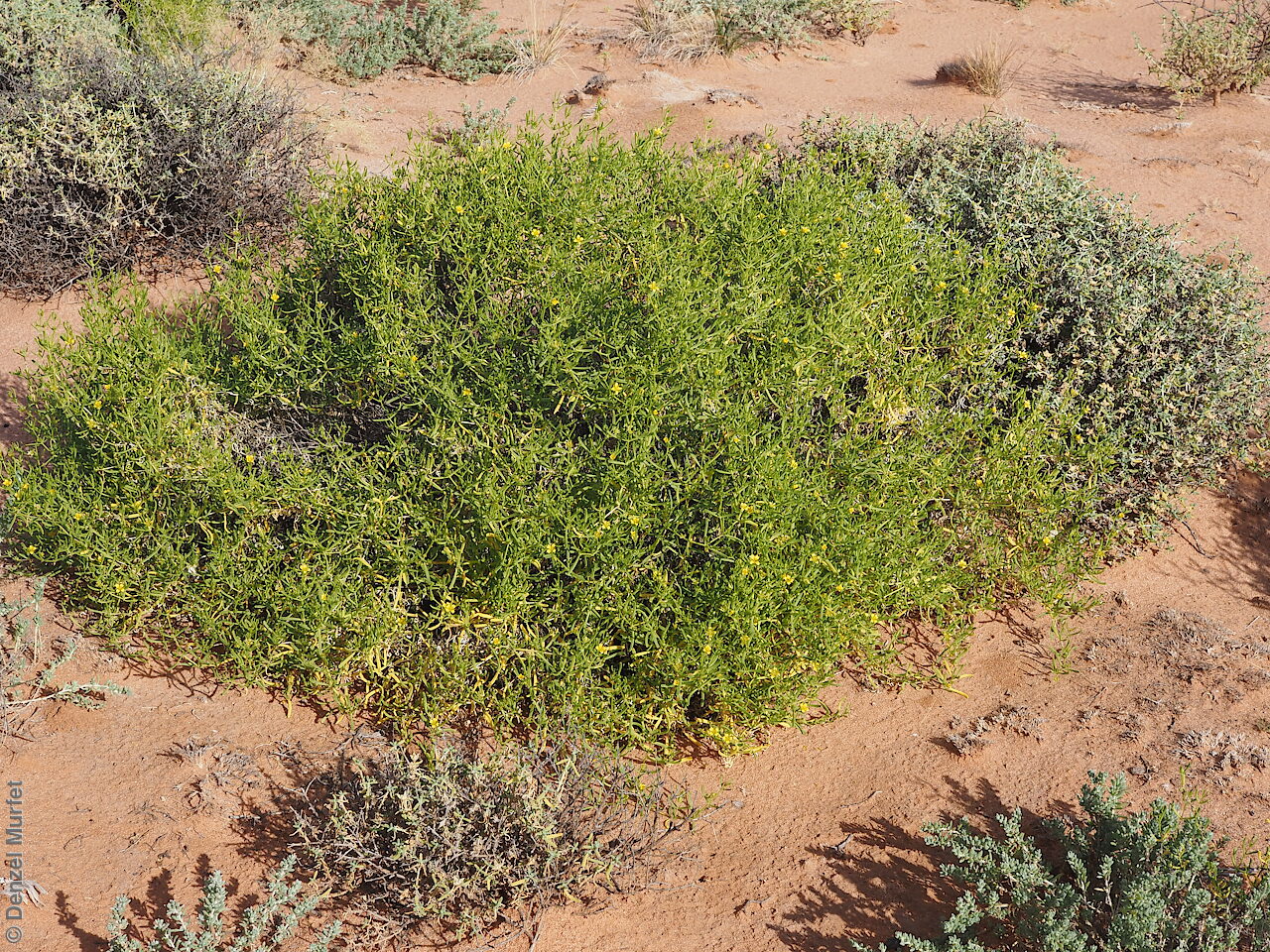
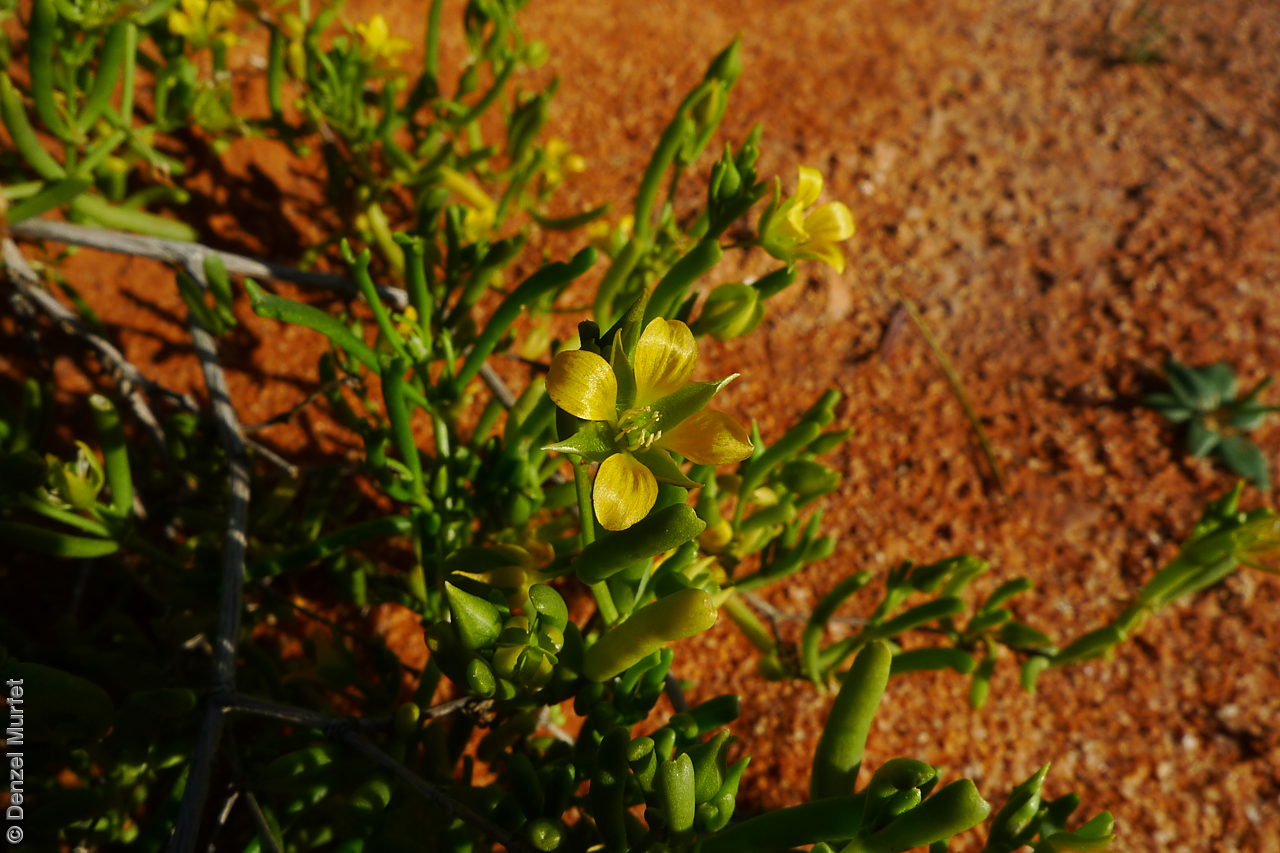
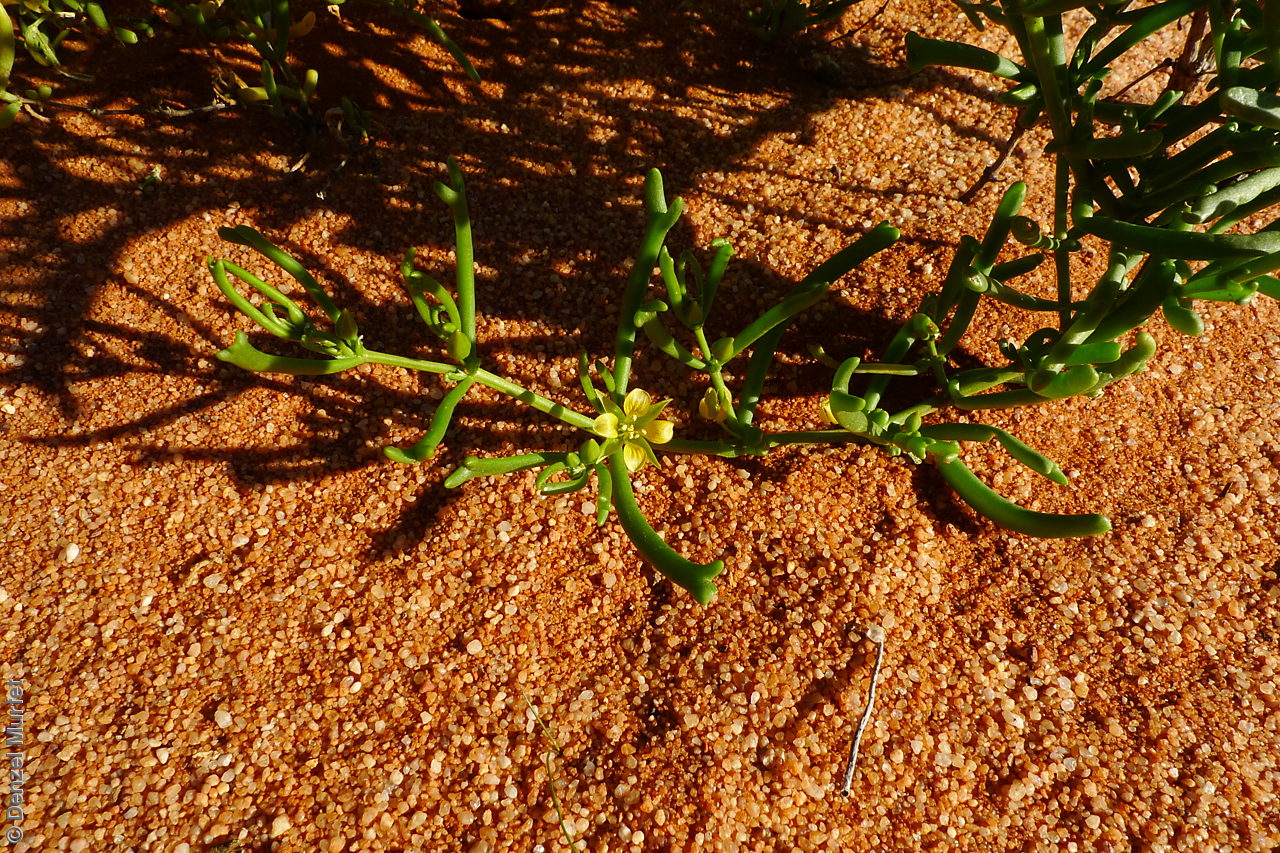
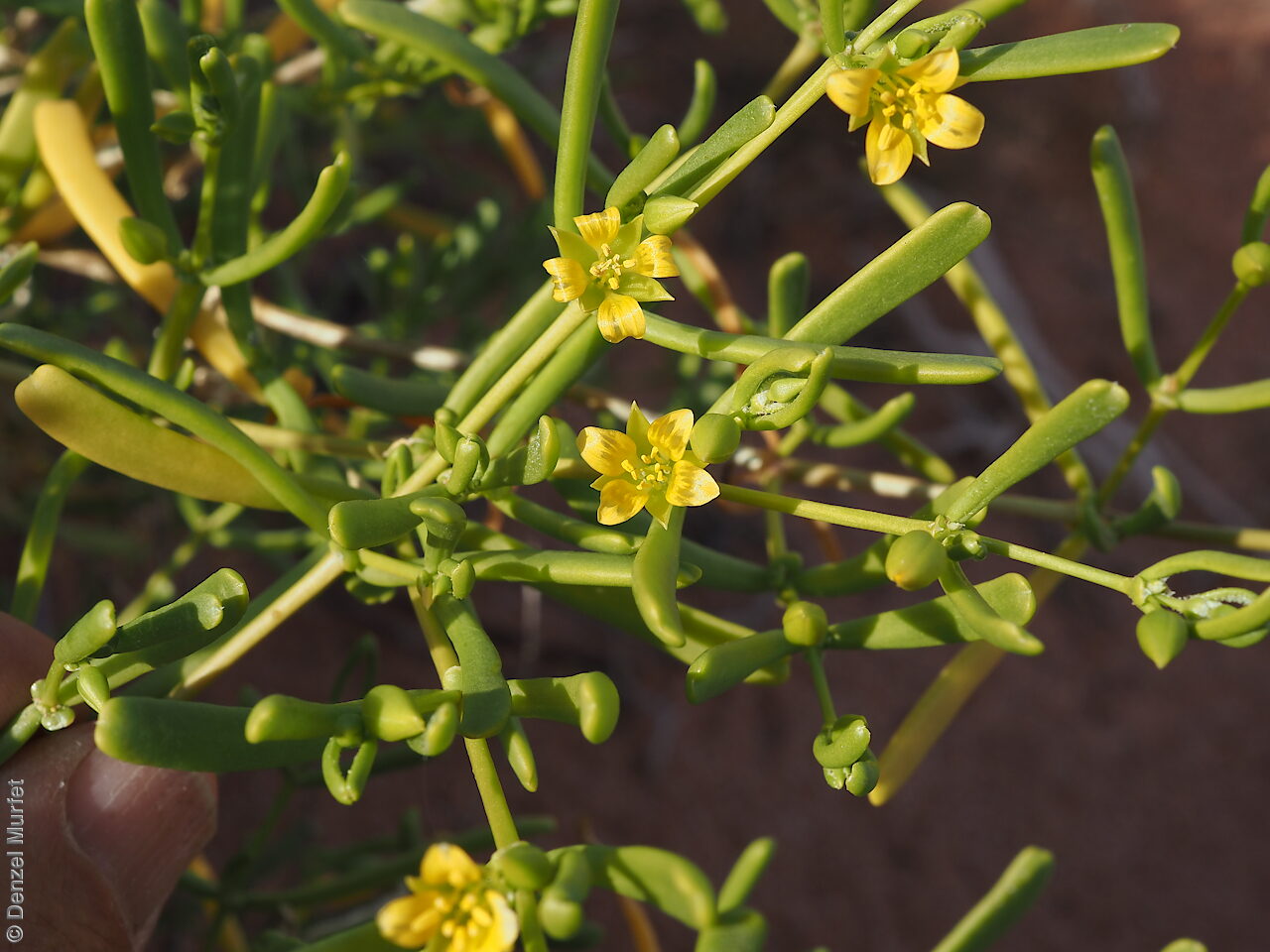
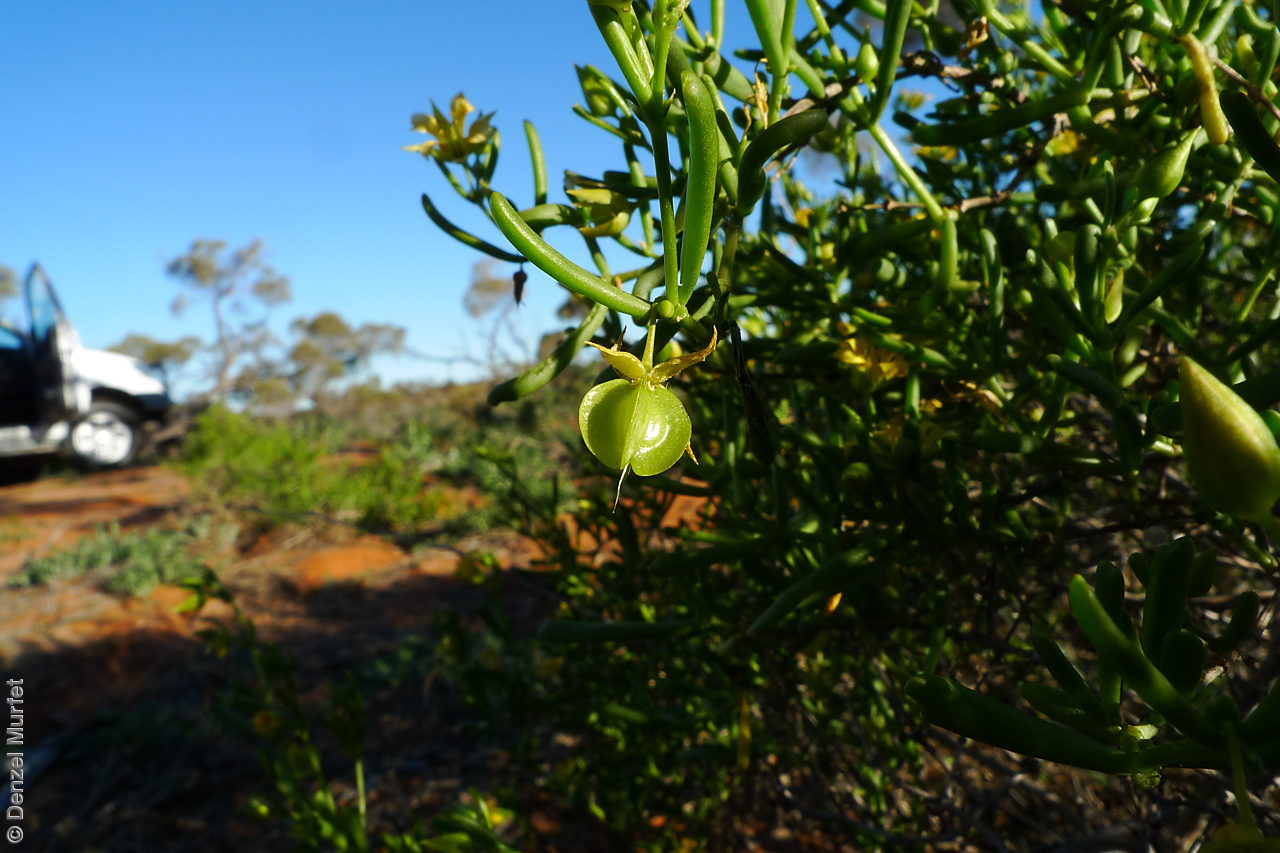
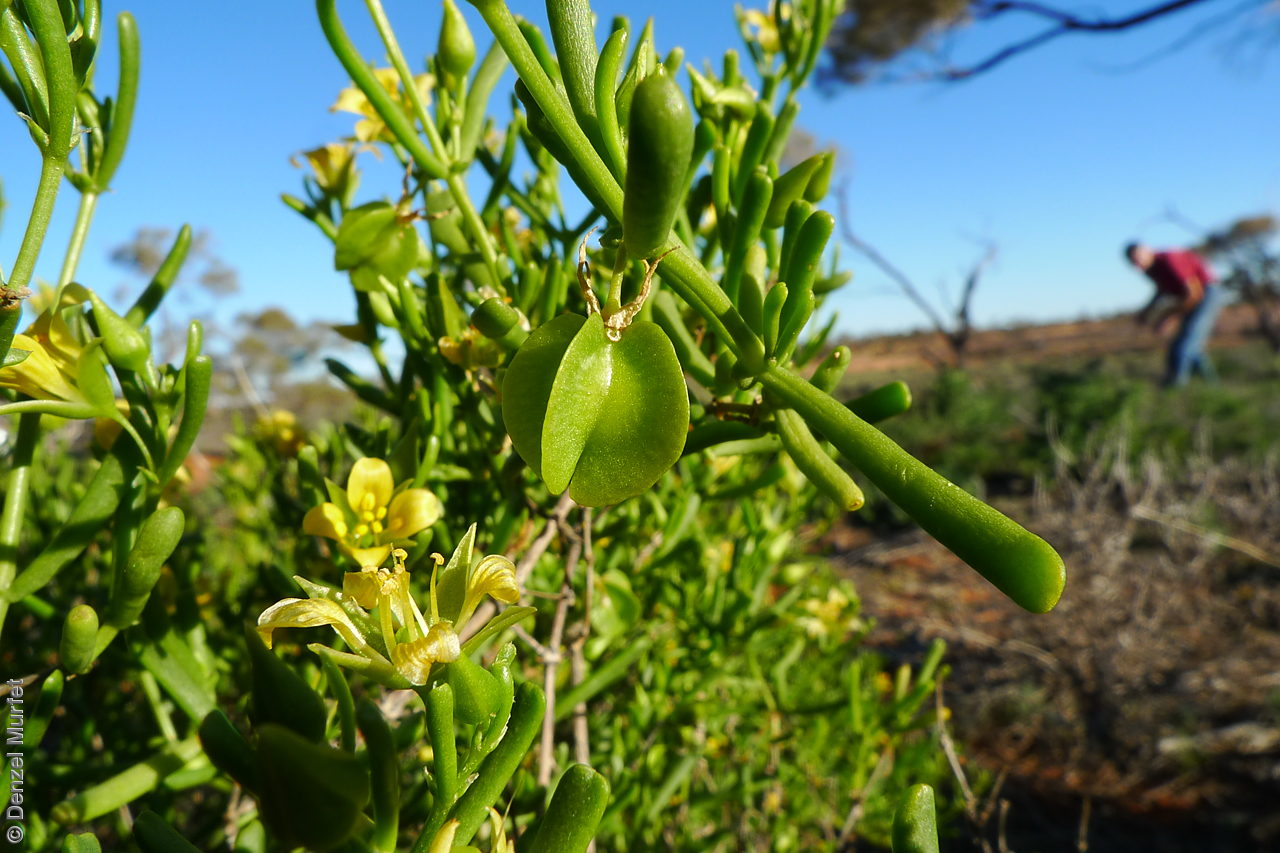
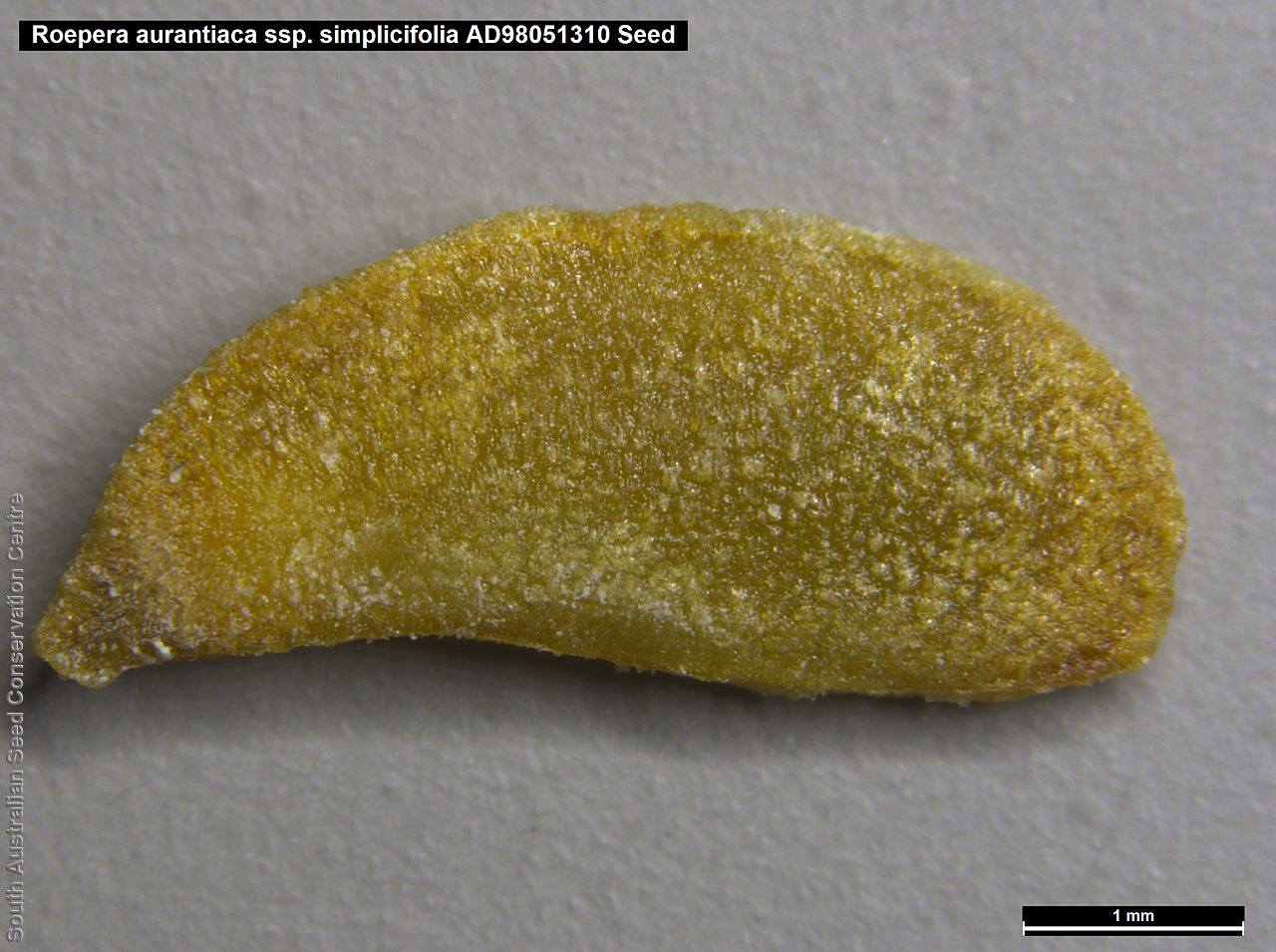
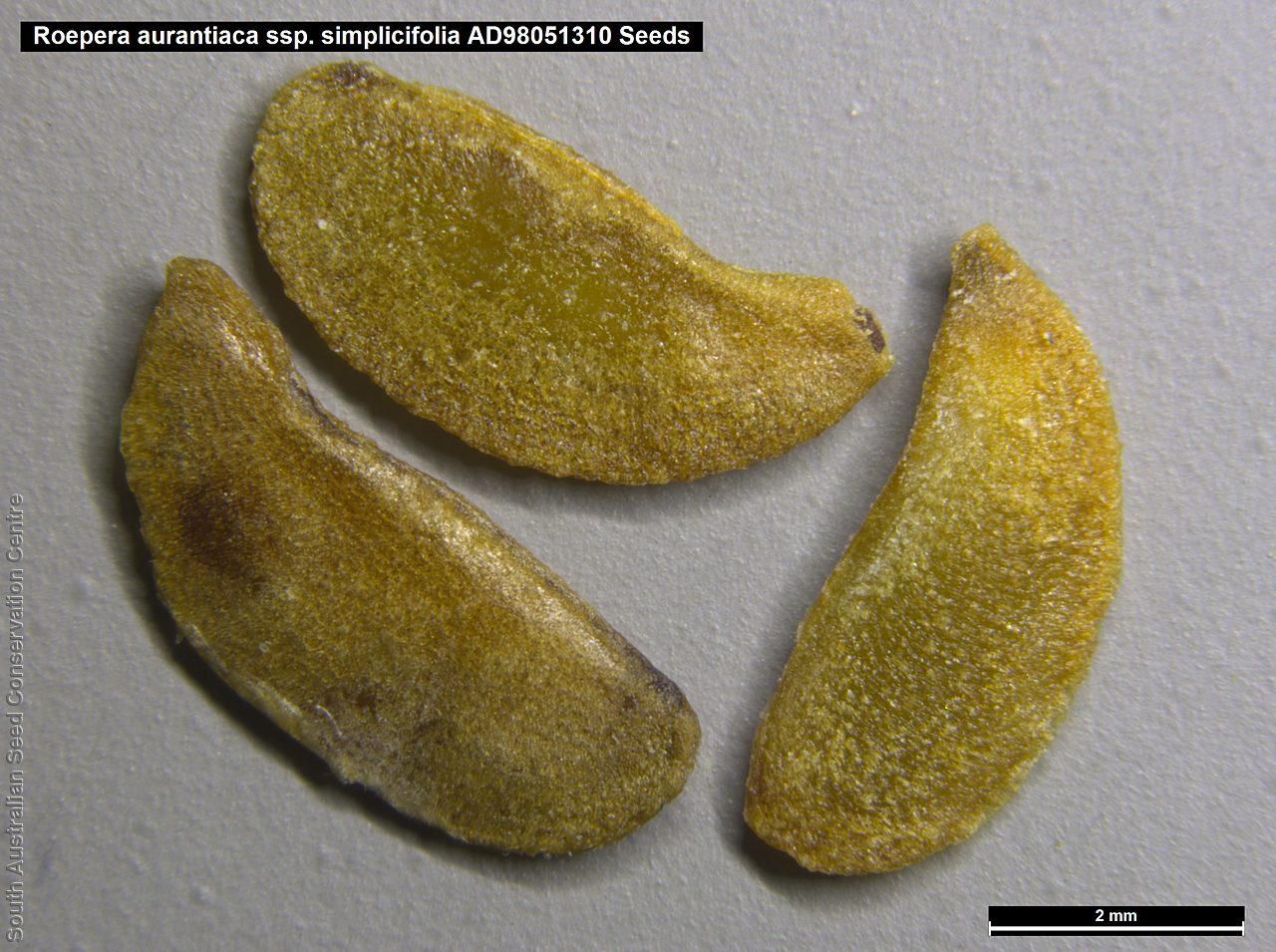

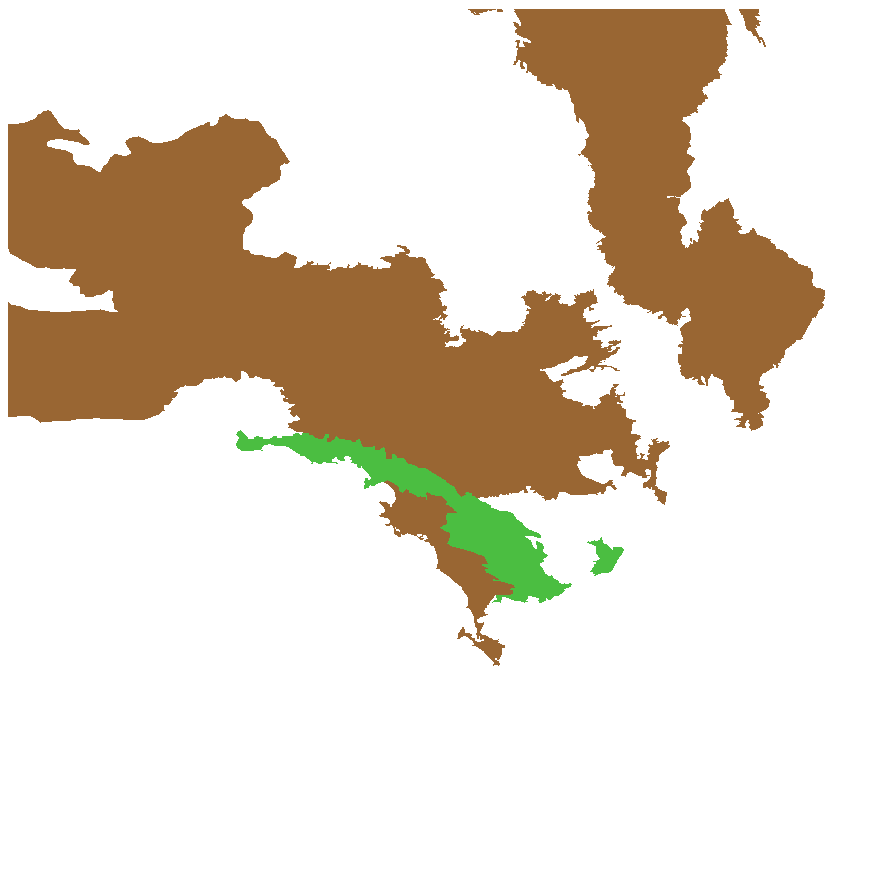
Botanical art
Prior names
Zygophyllum aurantiacum ssp. simplicifolium
Zygophyllum fruticulosum var. brevilobum, partly
Common names
Undivided Twinleaf
Shrubby Twinleaf
Etymology
Roepera (formally Zygophyllum which is from the Greek 'zygon' meaning pair and 'phyllon' meaning leaf; referring to the pair of leaflets making up each leaf) is named after Johannes August Christian Roeper (1801 -1885), a German botanist and physician. Aurantiaca from the Latin 'aurantiacus' meaning yellow-orange. Simplicifolia from the Latin 'simplix' meaning simple or undivided and 'folium' meaning leaf; referring to its undivided leaves, except near the tip.
Distribution and status
Found scattered across the northern part of South Australia, growing on the slopes of sand dunes at edges of salt lakes, usually in highly gypsiferous areas. Also found in the Northern Territory. Native. Uncommon in South Australia. Rare in the Northern Territory.
Herbarium regions: Lake Eyre, Nullarbor, Gairdner-Torrens, Eyre Peninsula
AVH map: SA distribution map (external link)
Plant description
Low and spreading or upright and rounded perennial shrub to 100 cm high. Leaves simple (petiolate only), linear, subterete, to 40 mm long and 1.7 mm wide, rounded, truncate or emarginate at apex, sometimes with very short lobes (less than 5 mm long). Inflorescence solitary on each node with yellow flowers. This subspecies differ from the other three subspecies found in South Australia, by having the simple leaves, lacking leaflets or only very shortly lobed at apex, paired at each node. Flowering between July and September. Fruits are yellow-brown round, four segmented capsule with papery wings, separating into 4 segments, each contains one seed. Seeds are yellow-orange, wedge-shaped to 5 mm long and 2 mm wide. Seed embryo type is spatulate fully developed.
Seed collection and propagation
Collect seeds between September and November. Collect semi-dried and dried capsules by running your hands through the stems of the plant. Mature fruits will come off easily and will have a hard and dark seed inside each segment. Place the capsules in a tray and leave to dry for 1 to 2 weeks, depending on how green the fruit is. Then rub the dried capsules to dislodge the seeds. Use a sieve to remove the unwanted material. Store the seeds with a desiccant such as dried silica beads or dry rice, in an air tight container in a cool and dry place. Seed viability is usually high.